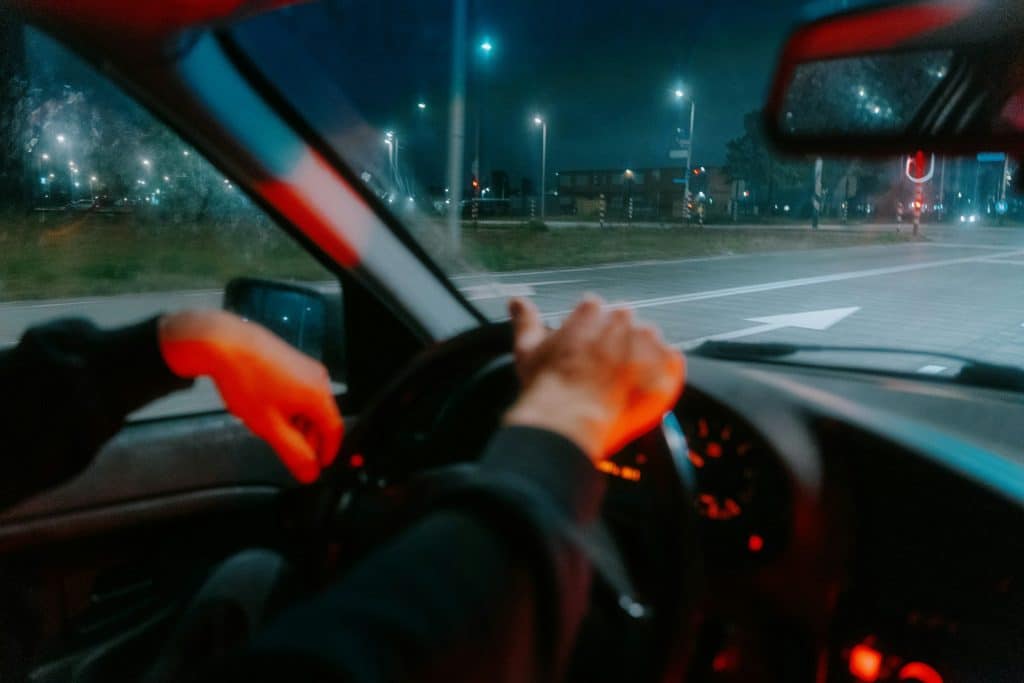Driving at night can feel like a totally different experience, especially when you’re behind the wheel of a big rig. In Las Vegas, where locals and tourists are constantly on the move even after dark, the roads don’t really slow down just because the sun sets. CDL drivers must stay sharp and prepared for everything from glare off neon lights to sudden stops caused by vehicles unfamiliar with truck behavior.
Nighttime driving in and around Las Vegas also comes with natural challenges. The dry desert air mixed with cooler night temperatures can cause visibility to dip fast. You’re also more likely to encounter wildlife trying to cross long stretches of open road. All of this makes preparation key—both for your truck and your body—so that you’re ready to stay clear-headed all the way through your route.
Preparing Your Vehicle
Before heading out for a night drive, your pre-trip inspection needs to go a little further. When it’s dark, small issues can become major obstacles. A burned-out bulb might mean the car behind you can’t see you brake in time. A dirty windshield might cause glare that’s too strong to see through. These aren’t just details—they’re safety risks.
Go through a detailed check before pulling out onto the road. Here’s a simple rundown to cover:
– Test all lights on your vehicle, including brake lights, tail lights, turn signals, and headlights (both high and low beams).
– Make sure your mirrors are in the right position and wiped clean.
– Wash your windshield both inside and out. Smudges and dust are worse at night.
– Use a flashlight to walk around your truck and check for damages or anything hanging loose.
– Confirm that your reflective tape is intact and clearly visible.
– Double-check your trailer’s connections and make sure tires are inflated properly.
When your lights, mirrors, and reflective surfaces are all working together, other drivers can see you better and you can respond faster. Not only does this keep you safer, it protects others around you too.
Staying Alert And Focused
Fighting off tiredness is a constant task during overnight hauls. Even if you’re well-rested before your trip, the body is naturally wired to wind down after sunset. That means you’ve got to be more intentional about staying alert. Yawning or zoning out for even a couple of seconds can lead to a wrong turn or worse, a crash.
Short breaks more often can keep your energy up. Pull into safe rest areas when you feel yourself getting foggy. Eating light can also help. Heavy meals can make you feel sluggish, but snacks like nuts, fruit, or granola bars tend to provide energy without the crash. Drinking water instead of sugary drinks or too much coffee also helps you stay balanced without jittering out.
Another practical tip is to move around from time to time. Stretching your arms and legs, even while seated, can get your blood moving again and help break the monotony. Also, if music keeps your brain engaged, that’s great, but don’t blast it loud enough to drown out engine or road sounds. Keep it at a level where it’s comfortable, not distracting.
Being aware of your focus level and having a game plan to snap out of any dip is one of the strongest habits you can form for driving safely in the dark.
Managing Visual Challenges
Seeing clearly at night isn’t just about using your headlights. Las Vegas roads can switch quickly from brightly lit stretches to long, dark patches, making it hard to keep your eyes adjusted. Throw in the glare from oncoming traffic or neon signage, and things can get uncomfortable fast if you’re not ready for it.
One of the easiest ways to ease night strain is to make sure your dashboard lighting isn’t too bright. It might seem helpful to keep everything lit up, but adjusting it to the lowest level you can still read puts less stress on your eyes. Make sure your windshield is free of fingerprints and streaks inside too. Even small smudges can light up when another car’s headlights hit them at the right angle.
Think about grabbing a good pair of anti-glare glasses. While they’re not a cure-all, they can cut down on reflections and may help you focus better, especially during long hauls. It’s also smart to get your eyes checked regularly. A strong prescription during the day doesn’t always work the same after dark.
Use your high beams when there aren’t other drivers around, particularly out on desert roads. But as soon as another set of headlights comes your way, switch back to low beams early so you’re not blinding the other driver. That little bit of courtesy can prevent dangerous overcorrections.
Navigating Desert Roads At Night
Driving through the Nevada desert after sunset feels different. The roads can seem endless, and light pollution thins out quickly outside city limits. This isolation brings its own set of driving challenges that CDL holders must anticipate.
The temperature drops steeply. Even if you started your trip in short sleeves, it’s wise to have a jacket or extra layer close by in case you need to stop. Cold air can also affect tire pressure, so stay alert for changes in how your rig feels on the road while you’re driving at lower speeds through hilly or uneven stretches.
Wildlife is another issue. From smaller animals darting out of bushes to larger ones crossing in packs, you won’t always see them in time if you’re cruising too fast. Keep your speed in check and scan far down the road for movement in your peripheral vision.
To stay safe out there:
– Check your GPS for updated routes and service alerts before leaving the metro area.
– Identify upcoming rest areas or travel stops, and don’t pass up a chance for fuel or a break.
– Carry a flashlight, jumper cables, warm layers, and water in case you need to pull over for any reason after midnight.
These roads may be quieter than Las Vegas city streets, but that just means fewer eyes if something goes wrong. Planning ahead and staying cautious gives you the upper hand.
Night Driving Safety Tips
Reducing your risks during a night drive isn’t about one quick fix. It’s about combining smart habits that create a safer trip from the very beginning. Treat every route as a new situation and stay flexible with your driving style depending on how the night unfolds.
Stick with these reminders when driving CDL routes overnight:
1. Leave enough space between you and the vehicle in front of you, especially in low light.
2. Keep speeds moderate, even when the road seems clear.
3. Use turn signals early and check mirrors often before making moves.
4. Stay aware of your blind spots. Other drivers may not respect them.
5. Scan for signs of fading attention such as squinting, blinking more than usual, or missing turns.
6. Pull over as soon as you’re unsure about your pace, direction, or overall mental sharpness.
7. Avoid overly bright screens inside your cab, including your phone or GPS.
These habits build your confidence and keep you in control, no matter what road or weather might throw at you.
Nighttime Confidence for Every CDL Driver
Night driving isn’t just another part of your CDL routine. It requires patience, planning, and a strong sense of awareness. Between equipment checks, staying rested, and managing visibility, there’s plenty to stay on top of, especially across Nevada’s nighttime terrain.
Las Vegas may be known for its bright lights, but once you’re outside city lines, the environment shifts and so should your driving mindset. Following reliable routines and giving yourself enough flexibility can help you manage night trips with skill and calm. Whether it’s your first overnight route or your hundredth, staying sharp helps bring you, your cargo, and every other driver around you safely to their destination.
Ready to take on the unique challenges night driving presents in the desert terrain? Strengthen your skills with our comprehensive programs for CDL in Las Vegas. At RTDS Trucking School, we’re committed to equipping you with the knowledge and confidence you need for every mile.

